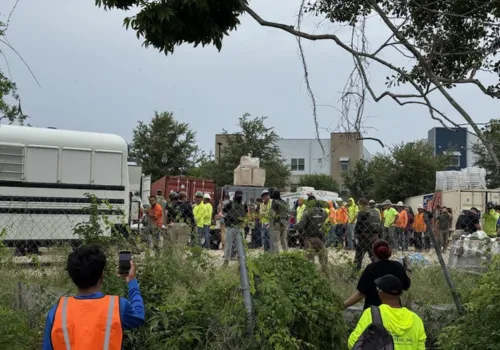
As former President Donald Trump pushes for increased deportations, construction leaders and labor economists warn that his policies could backfire on a housing market already suffering from deep labor shortages.
Although Trump recently told reporters that farms and hotels would be spared from new immigration raids, federal agents have already been active at construction sites. “Nevertheless, the Trump administration is going after construction workers without legal status to meet its mass deportation goals,” the article notes, “even as the country has a housing shortage and needs new homes built.”

According to a June report from the Home Builders Institute, the ongoing shortage of construction workers has caused billions of dollars in economic damage. The Stateline analysis of Current Population Survey data shows that nearly 2.2 million immigrant laborers without college degrees work in the U.S. construction industry—more than in restaurants, cleaning services, and landscaping combined.
“Regardless of where in Illinois you live, it costs dramatically more to own or rent a home today than it did five or ten years ago,” said Dr. Robert Bruno, director of the Project for Middle Class Renewal and coauthor of a separate housing shortage study.
Worksite raids by U.S. Immigration and Customs Enforcement (ICE) have recently been reported in Florida, Texas, Louisiana, California, and Pennsylvania. The most visible targets? Roofers.
“That’s the first place we heard about it. Roofers are right out there where you can see them,” said Sergio Barajas, executive director of the National Hispanic Construction Alliance. “Six or eight weeks ago, I would have said we weren’t affected at all. Now we are. There’s a substantial reduction in the number of workers who are showing up, so crews are 30%, 40% smaller than they used to be.”

The labor dynamics are especially precarious in Southern states such as Texas, Florida, and North Carolina—areas with significant immigrant construction workforces and high homebuilding demand. Roughly half of all immigrant laborers in construction are based in the South, while another 25% are in the West, including Arizona, Nevada, and California.
Experts also point to a systemic structure in the construction industry that often leaves immigrant laborers vulnerable. “It becomes a blame game,” said Enrique Lopezlira of UC Berkeley. “The developers can say, ‘I hired this contractor and I thought he was above board and paying people a decent wage.’ And the contractors can say, ‘I rely on subcontractors.’ It becomes a race to the bottom.”
In commercial construction, states like Texas benefit from weak labor protections and loose enforcement. Wages are often lower than union-dominated regions, and undocumented workers may be more likely to accept these conditions.
“The large difference [in cost] suggests workers and their employers in some regions are not paying for income taxes, overtime, Social Security or unemployment insurance,” said David Kelly, a civil engineering lecturer at the University of Michigan.
While immigration enforcement has become a political lightning rod, the actual share of noncitizen immigrant jobholders has remained largely unchanged at around 7% over the last decade, according to Stateline's analysis.
However, in construction, their role is growing. The share of construction jobs held by immigrant laborers rose from 19% in 2015 to 22% in 2024, with more than a third of the 1.5 million construction jobs added since 2015 going to immigrant workers.
For housing developers, labor organizers, and economists alike, the warning is clear: targeting undocumented construction workers could bring homebuilding to a halt—at a time when affordability is already spiraling out of reach.
Originally reported by Tim Henderson in New Hampshire Bulletin.